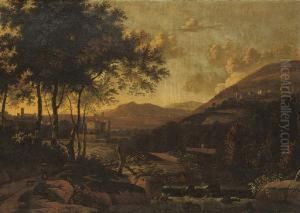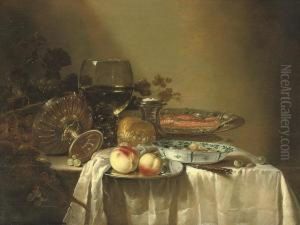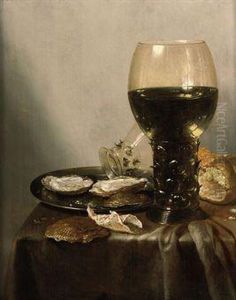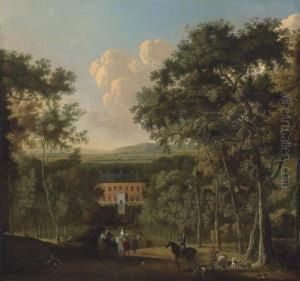Adriaen Jansz. Ocker Paintings
Adriaen Jansz. Ocker was a Dutch Golden Age artist, born in 1610 in the Netherlands. His life and career were emblematic of the period's rich artistic ferment. Little is known about his early years, but it is likely that he received his artistic training in one of the many flourishing workshops in Holland, a region renowned for its contributions to the development of Dutch art during the 17th century. Ocker's works are less documented than those of his contemporaries, making his biography somewhat elusive, yet his contributions to the Dutch Golden Age of painting remain significant. Ocker was primarily known for his landscape paintings, which often depicted the Dutch countryside with a remarkable sense of realism and attention to detail. His ability to capture the interplay of light and shadow, as well as his skilled depiction of water and sky, demonstrated his mastery of the techniques that defined Dutch landscape painting of the time. In addition to landscapes, Ocker also produced a number of still lifes and genre scenes, which were popular among the Dutch middle class. These works often featured the detailed and carefully arranged objects that were a hallmark of Dutch still life painting, showcasing his versatility as an artist. Despite his talents, Adriaen Jansz. Ocker did not achieve the same level of fame as some of his contemporaries, such as Rembrandt or Vermeer. However, his works were appreciated by art collectors of his time and continue to be studied by art historians for their contribution to the Dutch Golden Age. Ocker's paintings are preserved in various museum collections across the Netherlands and Europe, serving as a testament to his skill and artistic legacy. He passed away in 1684, leaving behind a body of work that, while not as widely recognized, is representative of the artistic achievements of his era.



